Global rescue plan needed for fruit and vegetable diversity
UN Food Systems Summit 2021 brief charts a path forward to conserve precious genetic resources for future food crop options
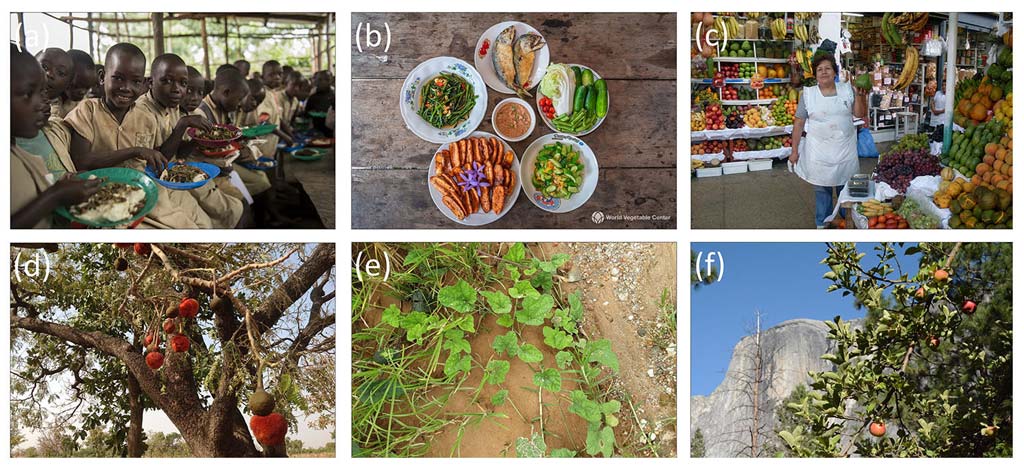
The many fruit and vegetable species in food production systems contributing essential nutrients to human diets are under threat from land use, climate change, and other factors, reports a United Nations Food Systems Summit (UNFSS) 2021 brief prepared by scientists working for member organisations of Association of International Research and Development Centers for Agriculture (AIRCA).
The brief, entitled ‘Safeguarding and Using Fruit and Vegetable Biodiversity’, warns that declining biodiversity limits options for a sustainable, healthy food supply.
As Research Partners of the Scientific Group for the Food Systems Summit 2021, authors Dr. Maarten van Zonneveld of the World Vegetable Center; Dr. Gayle M. Volk, U.S. Department of Agriculture; Dr. E. Ehsan Dulloo, Bioversity International; Dr. Roeland Kindt, World Agroforestry Centre; Dr. Sean Mayes, Crops for the Future; Dr. Marcela Quintero, International Center for Tropical Agriculture; Dr. Dhrupad Choudhury, International Centre for Integrated Mountain Development; Dr. Enoch G. Achigan-Dako University of Abomey-Calavi; and Dr. Luigi Guarino of the Crop Trust prepared the brief to propose a 10-year rescue plan for protecting genetic resources of the food plant species that contribute an astonishing array of colors, textures, flavors, and most importantly, vital nutrients to diets.
The plan aims to ensure fruit and vegetables can fulfil their increasingly prominent role in a new global research and development agenda emphasizing nutrition and healthy diets alongside climate action, safeguarding biodiversity, ending poverty, and improving livelihoods.
Poorly conserved and largely undocumented
While a few globally popular crops such as tomatoes or bananas absorb scarce research funds, less well-known fruit and vegetable species and their wild relatives languish from a lack of attention. The researchers report that a quarter of the 1,100 recognized vegetable species worldwide are not conserved in genebanks.
Wild relatives of fruit and vegetables—the source of traits for heat and drought tolerance, pest and disease resistance, color, shape, taste, nutrients, yield and more—are poorly represented in genebanks. About 39% of 883 wild fruit and veg relatives require urgent conservation and 58% are a medium priority for protection. Only 3% can be considered well-conserved.
Without back-ups of seed and genetic material in genebanks, these species and their valuable traits are at risk of being lost forever. Such loss will diminish choices in the food supply and severely constrict the ability of plant breeders to adapt existing food crops to changes in the environment. Development of improved tomato varieties, for instance, relies almost entirely on the diversity safeguarded in genebanks. Without more and better germplasm conservation, breeders will lack the building blocks to craft nutritious new varieties that taste good, resist pests and diseases, and can thrive under shifting climate conditions.
Safeguarding the supporting cast
To successfully reproduce, most fruit and some vegetables need interactions with insect pollinators and other supporting organisms. Over the past 40 years, relative yields of crops that depend on insects for pollination was 13% lower than pollinator-independent crops. This “pollinator-yield gap” has been brought about by an average 45% decline in terrestrial insect populations during those four decades, the result of habitat destruction, degradation, and fragmentation. Wild species dependent on insect pollinators for cross-fertilization are also at risk of extinction.
The researchers note the necessity of protecting fruit and vegetable pollinators and seed dispersers as part of the effort to ensure diversity in food crops going forward.
Six positive trends to stem the decline
The current situation is worrying, but there is hope. The brief outlines six trends favoring better conservation and use of fruit and vegetable biodiversity: 1) greater awareness of the health benefits of diets rich in fruit and vegetables; 2) an increase in the proportion of fruit and vegetable crops in global food production; 3) a reclaiming of some underutilized and neglected species; 4) an increase in food diversity, as immigrants bring their food plants and preferences to new locales; 5) advances in biotechnology to develop new varieties; and 6) a tripling over the past 40 years of areas to protect natural habitats and traditional production systems, many managed by indigenous communities with a commitment to maintaining agrobiodiversity.
It is important that young people in particular understand why fruit and vegetable biodiversity matters to their health and economic well-being, the researchers say. School feeding and school garden programs are ways to nourish students while maintaining a range of local crops in local food systems. Chefs, cooks and food innovators promoting the taste, cultural, and health aspects of local fruit and vegetable crops can create demand to drive conservation and greater use.
A 10-year plan for protection and use
To strengthen the existing network of genebanks, fill gaps, and protect wild populations of fruit and vegetable species and their pollinators and dispersers, the researchers outlined a 10-year, USD 250 million global rescue plan for fruit and vegetable biodiversity.
Collecting wild relatives of fruit and vegetable crops as well as underutilized and neglected species to increase the breadth and depth of genebank holdings would be the initial focus, researchers say. Building genebanks in sub-Saharan Africa is another priority; the region lacks the infrastructure to document and maintain local crop diversity.
Farmers, breeders, researchers, and businesses will benefit from stronger global partnerships for the collection, conservation, and sharing of fruit and vegetable germplasm. Internationally established policies and regulations governing these actions can prevent exploitation of local communities and landscapes.
Better documentation and mapping of genetic variation in fruit and vegetable traits, especially traits related to nutritional quality, will greatly enhance development of varieties suited for specific locales and purposes, say the authors.
In situ conservation of natural habitats and traditional production systems will help maintain local fruit and vegetable crops, and stimulate evolution of new traits through natural and human selection. Policies to protect pollinators, threatened species and populations, coupled with the documentation and use of traditional knowledge, will provide a framework for conserving more plant genetic resources for food and agriculture.
Fruit conservation is a particular challenge, as many fruit species must be maintained in fields or greenhouses and specific cultivars can be maintained only through vegetative propagation. The researchers propose that national fruit conservation programs work more closely together to develop shared tissue culture and cryopreservation facilities to protect fruit diversity.
Putting ideas into action
Fruit and vegetables provide nutrition and food security, income-generating opportunities, ecosystem services, and contribute to cultural identities. Protecting these species—and by extension, our ability to nourish ourselves—demands urgent action.
The authors suggest a global team of experts from different sectors and disciplines launch an initiative under the International Treaty on Plant Genetic Resources for Food and Agriculture to better conserve, monitor, and understand the diversity of our fruit and vegetable crops.
Aligning existing conservation efforts and including measures to protect pollinators and associated organisms is key, as is improving access and benefit sharing agreements for the exchange and use of food genetic resources. Partnerships among global custodians of diversity—from individual farmers to national parks, from public breeding programs to private seed companies—will be essential to the initiative’s success.
The authors conclude with an appeal for sufficient, sustained funding to ensure a global rescue plan for fruit and vegetable diversity can shift the research and development agenda to focus on nutrition and well-being.
Additional information
Main image:
Examples of activities to safeguard and use fruit and vegetable biodiversity: a) Engaging young people through school-feeding programs with fresh vegetables in Burundi; b) Thai traditional meal with local bananas and a rich variety of vegetables; c) Fruit vendor in Lima, Peru with a fruit of cherimoya (Annona cherimola Mill.) of the locally-grown cumbe variety; d) Populations of the multi-purpose tree species néré (Parkia biglobosa (Jacq.) R. Br. ex G. Don) are maintained in parklands in Benin and so far do not have a genebank back-up; e) Cucumis spp. - wild cucumber from Nyika National Park delimited as a crop wild relatives (CWR) genetic reserve in Malawi as part of Darwin Initiative SADC/CWR project 26-023; f) Heirloom apple (Malus domestica (Suckow) Borkh.) trees in Yosemite National Park in the United States are maintained in situ and have a back-up in the USDA field genebank. Photos credits: a) WFP, Hugh Rutherford; b, c) WorldVeg; d) University of Abomey-Calavi, Enoch Achigan-Dako; e) Malawi PGR Centre; f) USDA, Gayle Volk.
Read the full brief
You can read the full brief ‘Safeguarding and Using Fruit and Vegetable Biodiversity,’ by van Zonneveld et al here.
About AIRCA
AIRCA (The Association of International Research and Development Centers for Agriculture) is a seven-member alliance focussed on increasing global food security by supporting smallholder agriculture within healthy sustainable and climate-smart landscapes. Its members include CABI, World Vegetable Center, CFF – Crops for the Future, ICBA – International Center for Biosaline Agriculture, ICIMOD – International Centre for Integrated Mountain Development, ICIPE – African Insect Science for Food and Health and IFDC – International Fertilizer Development Center.
Find out more here: http://www.airca.org/index.php/about-airca
UN Food Systems Summit 2021
In 2021, UN Secretary-General António Guterres will convene a Food Systems Summit as part of the Decade of Action to achieve the Sustainable Development Goals (SDGs) by 2030. The Summit will launch bold new actions to deliver progress on all 17 SDGs, each of which relies to some degree on healthier, more sustainable and equitable food systems.
Learn more about the summit here: https://www.un.org/en/food-systems-summit/about
UN Food Systems Summit brief calls for global increase in consumption of fruits and vegetables
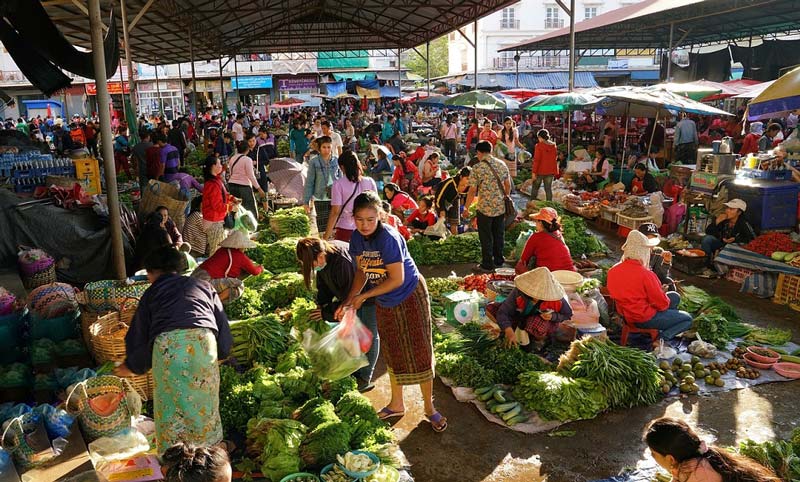
The need to increase the global consumption of fruits and vegetables for healthier diets has been highlighted in a United Nations Food Systems Summit (UNFSS) 2021 brief prepared by scientists working for member organisations of AIRCA.
The brief, entitled ‘Fruits and Vegetables for Healthy Diets: Priorities for Food System Research and Action’, states that fruits and vegetables are unaffordable for many, with 3 billion people around the world unable to afford diverse healthy diets.
Authors Dr Jody Harris of the World Vegetable Centre, Dr Stepha McMullin from World Agroforestry, Dr Babar Bajwa of CABI, Dr Bart de Steenhuijsen Piters, Dr Ilse de Jager and Dr Inge D. Brouwer – all of Wageningen University and Research, argue that it is necessary to address the issue of low fruit and vegetable consumption through a set of ‘push’, ‘pull’ and ‘policy’ actions.
The scientists, writing as Research Partners of the Scientific Group for the Food Systems Summit 2021, suggest that there is ‘still a need to better understand the different ways that food systems can make fruits and vegetables available, accessible, affordable and desirable for all people, across places and over time.’
However, they also stress that we already know enough to accelerate action in support of healthy diets to meet the World Health Organization (WHO) dietary recommendations and, specifically, the UN Sustainable Development Goal (SDG) 2: ‘Zero Hunger’ which highlights the importance of improved nutrition.
In the brief, the scientists note low desirability of fruits and vegetables is particularly a problem among children and adolescents, with data across 73 countries showing that between 10-30% of students do not eat any vegetables at all in a quarter of these countries. In 52 countries, 82% of the poorest quintile and 73% of the wealthiest quintile consume too few fruits and vegetables.
Even if vegetables are available, accessible, and affordable, most people still do not consume sufficient quantities for proper nourishment. Food safety or contamination concerns, taste preferences, or cultural appropriateness prevent many from increasing the amount of fruit and vegetables they consume.
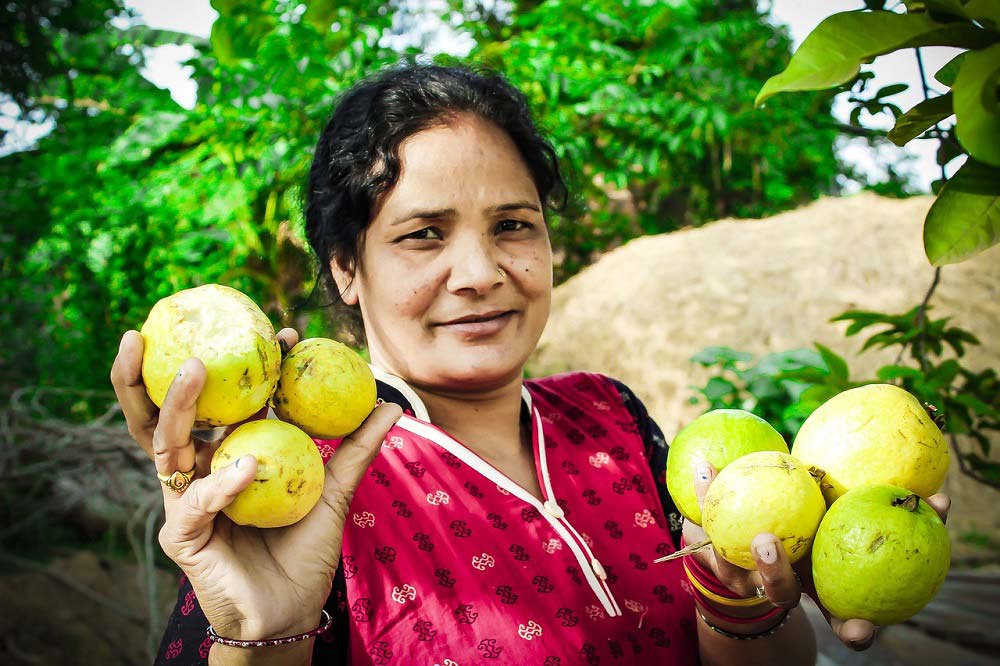
The need to ‘push’
‘Push’ factors (production and supply) demand particular attention in Africa, where only 13% of countries have an adequate aggregate vegetable supply; in Asia, 61% do. While most fruits and vegetables (about 92%) are not internationally traded, global activity in the fruit and vegetable sector was valued at US$ 138 billion in 2018.
The authors suggest that fruit and vegetable production needs to increase, particularly in regions with low consumption, together with accompanying measures to prevent losses to provide enough for healthy diets.
Push actions include strengthening farmer extension and documenting how informal sectors and formal small- and medium-sized enterprises involved in fruit and vegetable processing, distribution, and retail can deliver on desired food system outcomes.
The need to ‘pull’
‘Pull’ factors (demand and activism) aim to enhance consumer choice of and preference for fruit and vegetables.
Focusing on education at all levels is a key component for behaviour change. Nutrition literacy, social norms for healthy eating, and self-efficacy are essential for people to take charge of their diets and health.
The scientists observe that ‘beyond appeals to public health, better understanding is required of consumers’ preferences and behaviours with respect to these foods and what kinds of incentives might promote more consumption in different contexts.’
The need for ‘policy’
‘Policy’ (legislation and governance) is the third lever to shift food systems away from calories and toward diet quality.
The Green Revolution in the latter part of the 20th century transformed agriculture’s ability to produce sufficient calories to feed the world. But the focus on grain crops through funding, research, extension and technology development limited supply of nutrient-dense fruits and vegetables both through losses of wild sources with the promotion of monocultures, and through policy and structural impediments that crowded out non-staple crops.
The combined international public research budget for maize, wheat, rice, and starchy tubers is 30 times higher than for vegetables, for instance. This has influenced national food policies, which tend to emphasize staple crops as a source of cheap calories rather than a diverse diet with fresh foods as a source of essential nutrients.
‘Reverse thinking’ is suggested to address the current situation: Put the dietary outcomes we want from food systems up-front in responsive food policy-making and legislation. To reorient and incentivise systems, a better understanding of how public and private decision-makers make food system choices and the influence other food system actors have on these decisions is needed.
Next steps
Acknowledging that ‘power shapes food systems’ – from the ‘concentration economic and political power in a few global agri-food businesses, through to marginalisation of certain groups in societies’ – is an important step in shaping effective, equitable food policy.
There will be trade-offs among food system outcomes, the researchers say. Starting with a focus on healthy diets is important, but understanding how food system decisions impact fair livelihoods and sustainable environments is key.
Providing sufficient fruit and vegetables for healthy diets is not only a technical challenge. It also raises political, social and ethical questions societies will have to address, relying on evidence.
The authors conclude: ‘Having these conversations though the lens of equity, to address the needs of both winners and losers of food systems change, will be a vital part of the UNFSS process towards enabling fruit and vegetable-rich food systems for healthy diets for all.’
Additional information
Main image: There is a need to tackle the issues around the availability, accessibility and affordability of fruits and vegetables where 3 billion people around the world are unable to afford diverse healthy diets (Photo credit: Pixabay).
Read the full brief
You can read the full brief ‘Fruits and Vegetables for Healthy Diets: Priorities for Food System Research and Action,’ by Harris et al here.
About AIRCA
AIRCA (The Association of International Research and Development Centers for Agriculture) is a seven-member alliance focussed on increasing global food security by supporting smallholder agriculture within healthy sustainable and climate-smart landscapes. Its members include CABI, World Vegetable Center, CFF – Crops for the Future, ICBA – International Center for Biosaline Agriculture, ICIMOD – International Centre for Integrated Mountain Development, ICIPE – African Insect Science for Food and Health and IFDC – International Fertilizer Development Center.
Find out more here: http://www.airca.org/index.php/about-airca
UN Food Systems Summit 2021
In 2021, UN Secretary-General António Guterres will convene a Food Systems Summit as part of the Decade of Action to achieve the Sustainable Development Goals (SDGs) by 2030. The Summit will launch bold new actions to deliver progress on all 17 SDGs, each of which relies to some degree on healthier, more sustainable and equitable food systems.
Learn more about the summit here: https://www.un.org/en/food-systems-summit/about
icipe – 50 years of malaria-mosquito research
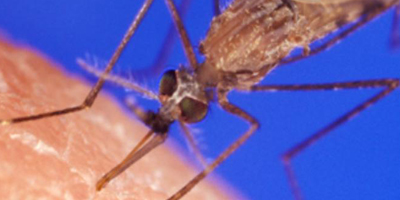 On 25 April 2020, the international community marked the World Malaria Day, an occasion set aside to recognise global efforts to control this disease. The global theme is: “Zero malaria starts with me”. Read more
On 25 April 2020, the international community marked the World Malaria Day, an occasion set aside to recognise global efforts to control this disease. The global theme is: “Zero malaria starts with me”. Read more
Build diverse food systems for post-COVID-19 world
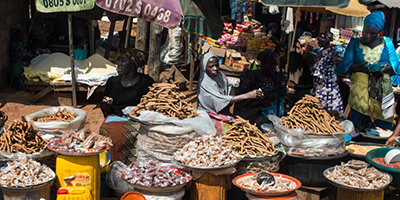 The spread of COVID-19 threatens food security for increasing numbers of people around the world. Now more than ever, AIRCA stands strong in hope and unity for global food and nutrition security. Read more
The spread of COVID-19 threatens food security for increasing numbers of people around the world. Now more than ever, AIRCA stands strong in hope and unity for global food and nutrition security. Read more
Strengthening AIRCA Monitoring and Evaluation Systems
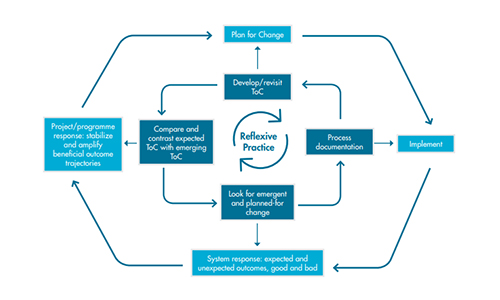
Article By: Boru Douthwaite
Senior Researcher - Innovation Systems, Social Learning and Theory of Change
Agricultural research and development organizations are under pressure to have and report more impact. Integrated monitoring, evaluation and learning (MEL) systems can help, however they do not evolve overnight.
MEL specialists belonging to the Association of International Research Centers in Agriculture (AIRCA) Community of Practice (COP) on monitoring and evaluation (M&E) have found that their respective MEL systems are following a common trajectory that progresses through four overlapping stages:
- Basic accountability - meeting donor accountability requirements, usually at project level.
- Outcome monitoring and impact evaluation - tracking project outcomes, both expected and unexpected, and showing their contributions to program- and center-wide targets and goals.
- Learning and strategic planning - using learning across projects in adaptive programming and strategic planning.
- Evaluation research - staff develop new MEL approaches and contribute to research on uptake and scaling processes.


